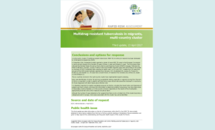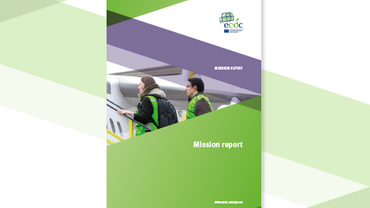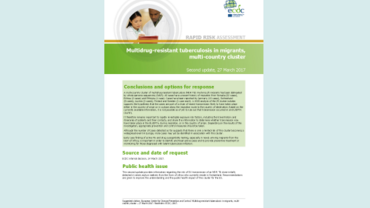Multidrug-resistant tuberculosis in migrants, multi-country cluster - 3rd update, 13 April 2017
A multi-country cluster of multidrug-resistant tuberculosis (MDR TB) involving 28 migrants has been delineated by whole genome sequencing (WGS) in migrants recently having arrived from countries in the Horn of Africa. Although the number of cases detected so far is small, there is a possibility that more cases associated with this cluster may still be identified.This risk assessment identifies the migration routes of the migrants and their countries of origin and offers options for response.
Executive Summary
This is the third update assessing the risk of transmission within the EU of a multidrug-resistant tuberculosis (MDR TB) strain initially detected by Switzerland in seven asylum seekers from the Horn of Africa. Recommendations are given to help improve the understanding and the public health impact of this cluster for the EU.
A multi-country cluster of MDR TB involving 28 migrants from Africa has been delineated by whole genome sequencing (WGS). As of 4 April 2017, the 28 cases that are part of the WGS cluster had been reported from Germany (14), Switzerland (8), Austria (2), France (2), Finland (1) and Sweden (1). All cases have a recent history of migration from Somalia (23), Eritrea (3), Sudan (1) and Ethiopia (1).
Identifying TB cases and determining their migration routes
Early case identification of active TB and drug susceptibility testing is important, especially in migrants arriving from the Horn of Africa. This action will help reduce transmission and can prevent occurrence of new cases. In addition, it will provide preventive treatment or monitoring for those who have been in contact with the cases and diagnosed with latent tuberculosis infection. Investigation of exposure risk factors, including the travel history of patients and their contacts, alongside the sharing of this information is key to determining whether transmission took place within the EU/EEA, during migration, or in the country of origin. Risk of transmission within the EU/EEA lies primarily within the affected migrant population. The number of cases detected so far suggests there is only a limited risk of this cluster becoming widespread in Europe.
ECDC is working with all EU/EEA Member States on identification of cases with an MDR TB strain showing the same genetic pattern.
Download







